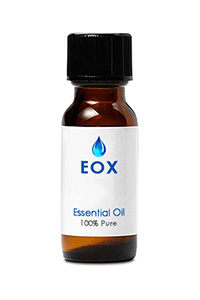New ArrivalsGift Ideas Specials Contact Us

WINTER 5% OFF SALE!
SITEWIDE05
Simply enter the above coupon code and save 5% on your ENTIRE ORDER!
Use PayPal, cash, or checks! NO LIMIT!

Now In: CATEGORIES → Essential Oils → 15ml Bottles → Essential Oil - Orange (Blood)
Botanical name: Citrus sinensis Color: Yellow orange to deep orange Consistency: Thin Perfumery note: Top to middle Related planets/deities: Sun Aroma: Sweet, fruity, richer than sweet orange Energetic Properties: Uplifting, refreshing Aromatherapy properties:A yellowy-orange or dark orange mobile liquid with a sweet,fresh-fruity scent, richer than the steam distilled Orange oil. It blends wellwith lavender, neroli, lemon, clary sage, myrrh and spice oils such as nutmeg,cinnamon and clove. Spiritual uses: Uplifting and calming, blood orange oil is considered a natural antidepressant. In times of shock or stress, the aroma of blood orange oil may relieve tension and anxiety and facilitate the flow of emotions that have been suppressed or numbed. A centering scent that is credited with generating feelings of security, blood orange oil may open the throat chakra, promoting communication and enabling users to ask others (and themselves) for what they want and need. Its ability to engender open communication also makes blood orange oil a valued aphrodisiac. Blends well with: Spice oils such as Cinnamon, Clove and Nutmeg, as well as Clary Sage, Lavender, Lemon, and Myrrh. History: Most historical accounts state that blood oranges were first cultivated in China and the southern Mediterranean in the 18th century. Possibly a natural mutation of the sweet orange, blood oranges have a red-pigmented interior, a sweeter taste, and produce a richer essential oil. In the opera Hesperides by the Italian Jesuit Ferrari, a character imports blood oranges to Europe from the Philippines. The blood orange tree and fruit also appear in works by Italian painter Bartolomeo Bimbi and botanical artist Micheli. Blood oranges were eventually brought to America by Spanish and Italian immigrants, and are now grown in Texas and southern California. |
|
|||||||
|
|||||||





